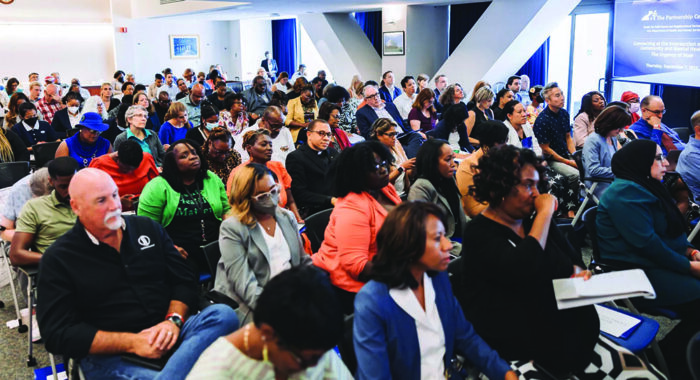With much fanfare, The Washington Post reported at the beginning of summer that a third of U.S. adults are experiencing depression, anxiety or a combination of both conditions amid the coronavirus pandemic. Recent considerations aside, has mental illness been on the rise, or has increased awareness in past decades led to more diagnoses? Well, it’s complicated.
Consistent Overall Rates
According to the National Institute of Mental Health (NIMH), nearly 20 percent of adults experience at least one mental illness at any point in time. As reported by the National Alliance on Mental Illness, for children and teens, approximately one in six experienced a mental disorder in the most recent year studied. All told, more than 50 million Americans are affected. Those numbers sound shocking. But the percentage of the population impacted hasn’t changed a great deal in recent decades.
A 2019 study published in the Journal of Abnormal Psychology suggested that increases in mental illness in adults were primarily a result of a steady rise in mood disorders and suicide-related outcomes among persons born between the early 1980s and late 1990s. The NIMH reports that more than one in four 18-25 year olds were diagnosed with a mental health disorder in 2017, compared to one in seven adults over the age of 50. Rates of depression in the 18-25 age group increased 63 percent between 2009 and 2017, and serious psychological distress in this age group increased by 71 percent with less consistent and weaker increases among adults ages 26 and over.
Changes to Type and Severity
Among children and teens, the overall prevalence of mental illness hasn’t changed much over time, but the type and severity of illness have changed, according to research published by the Journal of American Medical Association. Between 2005 and 2018, depression and anxiety have become significantly more common, while behavioral disorders are somewhat less common. Rates of depression in teens increased 52 percent between 2005 and 2017 (from 8.7 percent to 13.2 percent). When compared to 2005, contemporary youth are more likely to receive mental health treatment, experience more treatment sessions, and spend more time in psychiatric hospitals.
While overall rates of mental illness aren’t increasing, rates of suicide are clearly on the rise, having increased by 31 percent between 2001 and 2017. Even more alarming, rates of suicide increased by 56 percent for persons between the ages of 10-24 from 2007 to 2017. Suicide is now the second leading cause of death among all Americans between the ages of 10 and 34, and the fourth leading cause of death among persons ages 35-54, according to the NIMH. In churches, there was a spike in mental health awareness in the aftermath of the deaths of Matthew Warren (son of Rick and Kay Warren) and prominent pastors, including Jarrid Wilson and Andrew Stocklein.
Rates of depression and anxiety clearly appear to be increasing among teens and young adults, and suicide rates are increasing for everyone, especially for teens and adults under the age of 25, even if overall rates of mental illness in the general population are relatively stable.
Why the Increases for Younger People?
The larger question is why the younger age group is so impacted. Many blame ubiquitous smartphones and social media. Yet smartphones often function as an indispensable social lifeline. Are there other plausible explanations for increases in depression, anxiety and suicide seen in teens and young adults?
People are more socially isolated and lonely than ever before. Our former Surgeon General considers loneliness to be a greater public health crisis than either obesity or smoking, an alarming thought given the prospect of another extended round of quarantining and social isolation this fall and winter from COVID-19.
We’re losing our ability to respond appropriately to adversity. Research from Arizona State University suggests that resiliency following stressful events is in short supply. According to the Centers for Disease Control, four of the five most common factors associated with suicide include relationship problems, a crisis in the past or coming two weeks, a physical health problem or a job/financial problem. People who lack the resources to respond to stressful life events are at greater risk of depression or suicide.
Increases in suicide rates are a natural consequence of a culture beginning to embrace physician-assisted suicide. The media glamorize the lives of people like Brittany Maynard, a young woman with brain cancer who overdosed on medication prescribed by her doctor.
An article in the Southern Medical Journal shows that suicide rates are significantly higher in the nine U.S. states where physician-assisted suicide is legal.
Rates of mental illness reflect challenges teens and young adults face in responding to the demands of their environment. Pressure to succeed academically is immense when the opportunities to earn a living are diminished for those without a college education. Many go out into the world carrying an enormous debt burden. More struggle to become independent from their parents.
The Church’s Response
A critical issue for churches is to consider how the experience of mental illness impacts attendance at worship services and participation in small groups, Christian education and missional outreach. According to a 2018 study from Clemson University, families with children or youth with common mental health conditions are much less likely to set foot in a church. That likelihood decreases by:
- 73 percent if a child has depression;
- 55 percent if a child has conduct disorder;
- 45 percent if a child has an anxiety disorder; and
- 19 percent if a child has ADD or ADHD.
Is there a relationship between the rise in mental illness among millennials and the precipitous drop in identification with Christianity among members of that generation? Earlier research from LifeWay showed that 55 percent of adult non-attenders believe that people with mental illness aren’t welcome at church.
Over 50 million fellow citizens live with conditions impacting their ability to work, learn and connect with other people, including their brothers and sisters in the church. Expressions of love and concern from evangelicals is a measure of the authenticity of our witness for Christ.
This article originally appeared in Evangelicals magazine.
Stephen Grcevich is president and founder of Key Ministry, and author of “Mental Health and the Church.” He is a child and adolescent psychiatrist who combines over 25 years of knowledge gained through clinical practice and teaching with extensive research experience evaluating medications prescribed to children and teens for ADHD, anxiety and depression. He received a B.S. from Youngstown State University and an M.D. from Northeast Ohio Medical University, where he serves a clinical associate professor of psychiatry.




 View All Articles
View All Articles 











